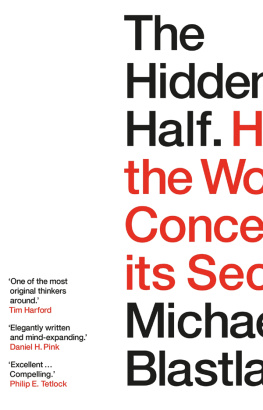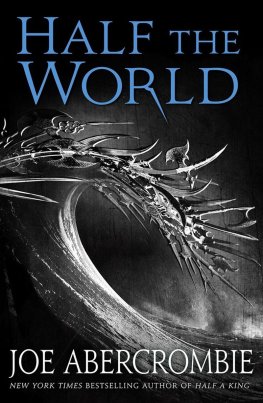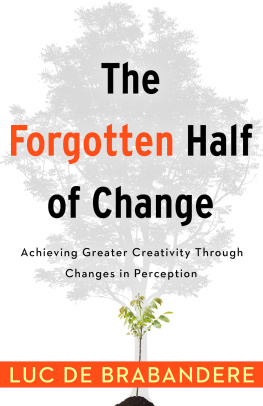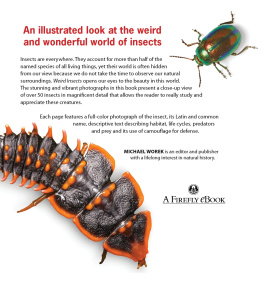Contents
Guide
Praise for
The Hidden Half
Brilliant. Blastland provides an explanation of the need for humility in the face of the inevitable limits to knowledge.
Diane Coyle Bennett Professor of Public Policy, Cambridge University
Fascinating... As John Wooden said, its what you learn after you know it all that counts.
Andrew Gelman author of Red State, Blue State, Rich State, Poor State
Beautifully written and often very funny.
Dame Frances Cairncross Chair, Executive Committee of the Institute for Fiscal Studies
Packed with fascinating examples of our shaky understanding of ourselves and the world.
Bobby Duffy Director, the Policy Institute at Kings College London
A terrific book! I read it quite literally in one sitting.
Nick Chater Professor of Behavioural Science, Warwick Business School, and author of The Mind is Flat
About the Author
Michael Blastland is a writer and broadcaster. He was the originator of BBC Radio 4s More or Less, the long-standing, authoritative guide to numbers and evidence in public argument. He is the author with Andrew Dilnot of the bestselling The Tiger That Isnt: Seeing Through a World of Numbers, a guide to interpreting numbers in public argument, and co-author with Professor David Spiegelhalter of The Norm Chronicles, about risk. He writes, teaches and advises widely on risk, evidence and data.

First published in hardback and trade paperback in Great Britain in 2019 by Atlantic Books, an imprint of Atlantic Books Ltd.
Copyright Michael Blastland, 2019
The moral right of Michael Blastland to be identified as the author of this work has been asserted by him in accordance with the Copyright, Designs and Patents Act of 1988.
All rights reserved. No part of this publication may be reproduced, stored in a retrieval system, or transmitted in any form or by any means, electronic, mechanical, photocopying, recording, or otherwise, without the prior permission of both the copyright owner and the above publisher of this book.
1 2 3 4 5 6 7 8 9
A CIP catalogue record for this book is available from the British Library.
The following images are reproduced with kind permission of the following parties: (right) Alamy Images.
Hardback ISBN: 978 1 78649 777 2
Trade paperback ISBN: 978 1 78649 637 9
E-Book ISBN: 978 1 78649 638 6
Printed in Great Britain
Atlantic Books
An Imprint of Atlantic Books Ltd
Ormond House
2627 Boswell Street London
WC1N 3JZ
www.atlantic-books.co.uk
For Alan, for the rockets
The great menace to progress is not ignorance but the illusion of knowledge.
Daniel Boorstin, Cleopatras Nose: Essays on the Unexpected
Contents
Prologue
The marmorkrebs and the hidden half
It aint what you know that gets you into trouble, its what you know for sure that just aint so.
Mark Twain (possibly)
In the mid 1990s, rumour ran through the small world of aquarium owners and traders in Germany of a peculiar new beast, previously unknown to science. There was no hint of it in the wild, so how this creature turned up in the German aquariam trade, no ones sure. One day it didnt exist, the next it did in a fish tank.
The marmorkrebs, as they were later named, were a new species of crayfish, similar to other crayfish apart from one conspicuous fact: lone females had spontaneously started to lay eggs that hatched without fertilization, the process known as parthenogenesis. These crayfish no longer needed to mate. The mothers offspring were natural clones.
People wondered, its only females, where are the males?, said Frank Lyko, an epigeneticist, adding that normal evolution of a new species can take thousands of years.
No other crayfish or related creature, none of the approximately 15,000 species of decapod including crabs, shrimps, prawns and lobsters was known to do this. No one seems to know how it came about, other than to speculate on a spontaneous mutation, one day, in just one crayfish in one fish tank, the marmorkrebs Eve.
All this was peculiar and wonderful enough, but the story continues: having startled us with their out-of-the-blue existence, the marmorkrebs were about to ruffle a mass of human presumptions.
First, they caught the eye of scientists who, in a short report in the journal Nature in 2003, revealed them to the research community with a storytellers flourish:
It has been rumoured that an unidentified decapod crustacean, a crayfish of marbled appearance and of uncertain geographical origin that was introduced into the German aquarium trade in the mid-1990s, is capable of unisexual reproduction (parthenogenesis). Here we confirm that this marbled crayfish (marmorkrebs) is parthenogenetic under laboratory conditions.
Cloning helps to make marmorkrebs a menace in the wild, where they are said to be invasive, as the release of just one can establish a whole population. They are also robust and highly fecund as the research put it: quick to mature and laying a lot of eggs. You put them into your aquarium and a year later you have hundreds, said Frank Lyko in 2018, after Eves offspring became briefly famous for scuttling free and over-running Madagascar. It was a headline writers dream: Invasion of the mutant crayfish.
But the greater interest of these cloned creatures to science lay in an altogether different direction: in the marmorkrebs potential to help with that old and thorny question of the balance of forces between nature and nurture, as researchers realized they had stumbled on an ideal experimental subject.
Ordinarily, its hard to tease apart why things turn out the way they do. If you fall ill with heart disease, there is a tangle of potential causes, genetic and environmental; the fault could be inherited, dietary, linked to exercise (too little/too much), stress, some combination, and so on. By holding constant the role of genes, clones make it easier to tease out other influences. Whatever happens to them, one compared with another, pure difference of genes will not be the explanation. These cloned crayfish were a research godsend.
So it was that, one day in Germany, researchers chose two founder females to be the great mothers of two laboratory lineages, naming them A and B (such are the names of legends when youre a crayfish). They popped As and Bs offspring into tanks of water to see what happened. Each of the two lineages was genetically identical, naturally. This was not merely assumed; they were checked for genetic consistency.
But the research went further. The marmorkrebs were also all hatched and raised in exactly the same lab-controlled environment. Now, every influence on their development was as consistent as possible. They were fed the same food (Tetra Wafer Mix, since you ask), checked regularly for disease, and reared in simplified tanks containing room-temperature tap water. It was even arranged for the same person to examine them on every occasion. The aim as far as humanly possible was to eliminate every variation that anyone could think of. They were born into the most boring uniformity humans could contrive.
What were they like, these clones in an identical environment? Take a moment, hazard a guess. About the same? Maybe











